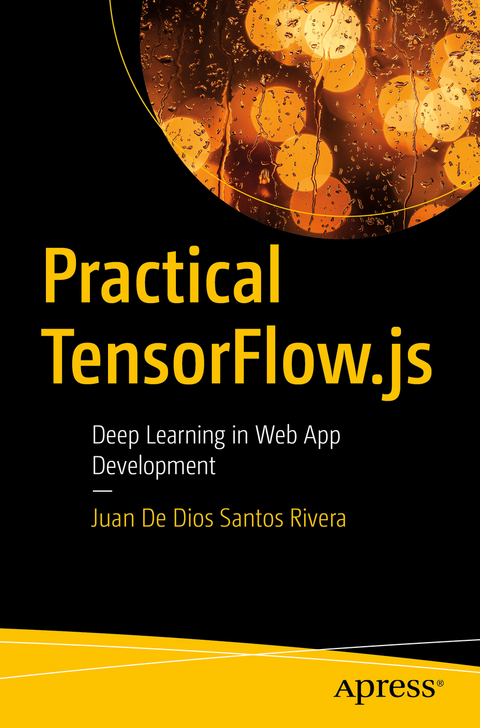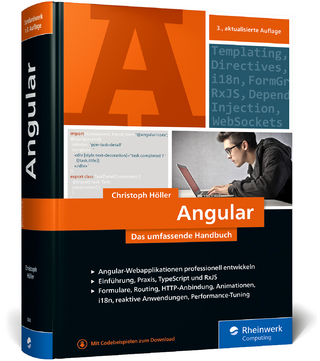
Practical TensorFlow.js
Apress (Verlag)
978-1-4842-6272-6 (ISBN)
The most common and accessible platform users interact with everyday is their web browser, making it an ideal environment to deploy AI systems. TensorFlow.js is a well-known and battle-tested library for creating browser solutions. Working in JavaScript, the so-called language of the web, directly on a browser, you can develop and serve deep learning applications.You'll work with deep learning algorithms such as feedforward neural networks, convolutional neural networks (CNN), recurrent neural networks (RNN), and generative adversarial network (GAN). Through hands-on examples, apply these networks in use cases related to image classification, natural language processing, object detection, dimensionality reduction, image translation, transfer learning, and time series analysis.
Also, these topics are very varied in terms of the kind of data they use, their output, and the training phase. Not everything in machine learning is deep networks, there is also what some call shallow or traditional machine learning. While TensorFlow.js is not the most common place to implement these, you'll be introduce them and review the basics of machine learning through TensorFlow.js.
What You'll Learn
Build deep learning products suitable for web browsers
Work with deep learning algorithms such as feedforward neural networks, convolutional neural networks (CNN), recurrent neural networks (RNN), and generative adversarial network (GAN)
Develop apps using image classification, natural language processing, object detection, dimensionality reduction, image translation, transfer learning, and time series analysis
Who This Book Is For
Programmers developing deep learning solutions for the web and those who want to learn TensorFlow.js with at least minimal programming and software development knowledge. No prior JavaScript knowledge is required, but familiarity with it is helpful.
Juan De Dios Santos Rivera is a machine learning engineer who focuses on building data-driven and machine learning-driven platforms. As a Big Data Software Engineer for mobile apps, his role has been to build solutions to detect spammers and avoid the proliferation of them. This book goes hand-to-hand with that role in building data solutions. As the AI field keeps growing, developers need to keep extending the reach of our products to every platform out there, which includes web browsers.
Chapter 1: Welcome to TensorFlow.js .- Chapter 2: Training Our First Models.- Chapter 3: Doing k-means with ml5.js.- Chapter 4: Recognizing Handwritten Digits with Convolutional Neural Networks.- Chapter 5: Making a Game with PoseNet, a Pose Estimator Model.- Chapter 6: Identifying Toxic Text from a Google Chrome Extension.- Chapter 7: Object Detection with a Model Trained in Google Cloud AutoML.- Chapter 8: Training an Image Classifier with Transfer Learning on Node.js.- Chapter 9: Time Series Forecasting and Text Generation with Recurrent Neural Networks.- Chapter 10: Generating Handwritten Digits with Generative Adversarial Networks.- Chapter 11: Things to Remember, What's Next for You, and Final Words.- Appendix A: Apache License 2.0.
| Erscheinungsdatum | 25.09.2020 |
|---|---|
| Zusatzinfo | 67 Illustrations, black and white; XXIV, 303 p. 67 illus. |
| Verlagsort | Berkley |
| Sprache | englisch |
| Maße | 155 x 235 mm |
| Themenwelt | Informatik ► Software Entwicklung ► Mobile- / App-Entwicklung |
| Informatik ► Theorie / Studium ► Künstliche Intelligenz / Robotik | |
| Mathematik / Informatik ► Informatik ► Web / Internet | |
| Schlagworte | Artificial Intelligence • Artificial Neural Networks • Computer Science • computer vision • Data Science • Deep learning • JavaScript • machine learning • Natural Language Processing • tensorflow • TensorFlow.js • Web Programming |
| ISBN-10 | 1-4842-6272-7 / 1484262727 |
| ISBN-13 | 978-1-4842-6272-6 / 9781484262726 |
| Zustand | Neuware |
| Informationen gemäß Produktsicherheitsverordnung (GPSR) | |
| Haben Sie eine Frage zum Produkt? |
aus dem Bereich


